우리 마을 (Uri Ma’eul—Our Town)
As I said last post, it’s about time I posted a few pictures of the town I live in. Here they come.
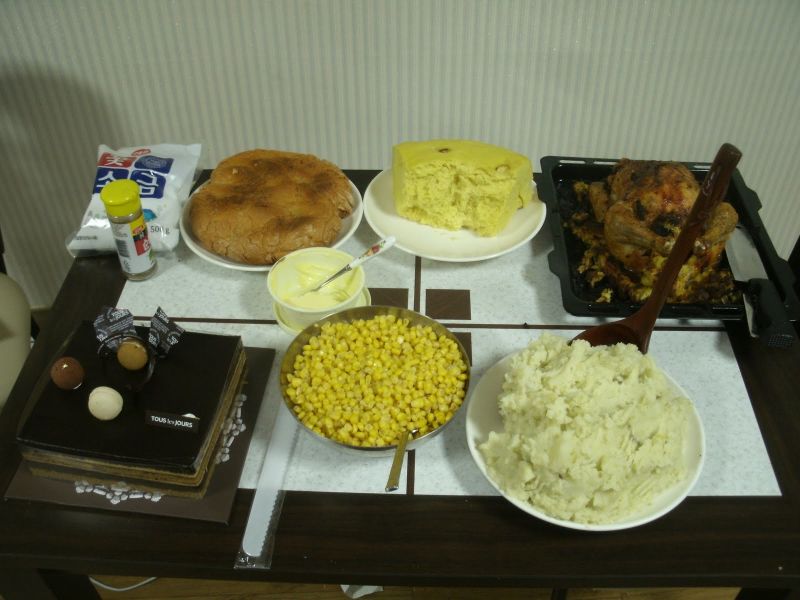
Before anything else, I must post a picture of the Thanksgiving dinner I made. I made the potatoes, bread, and chicken. It was delicious.
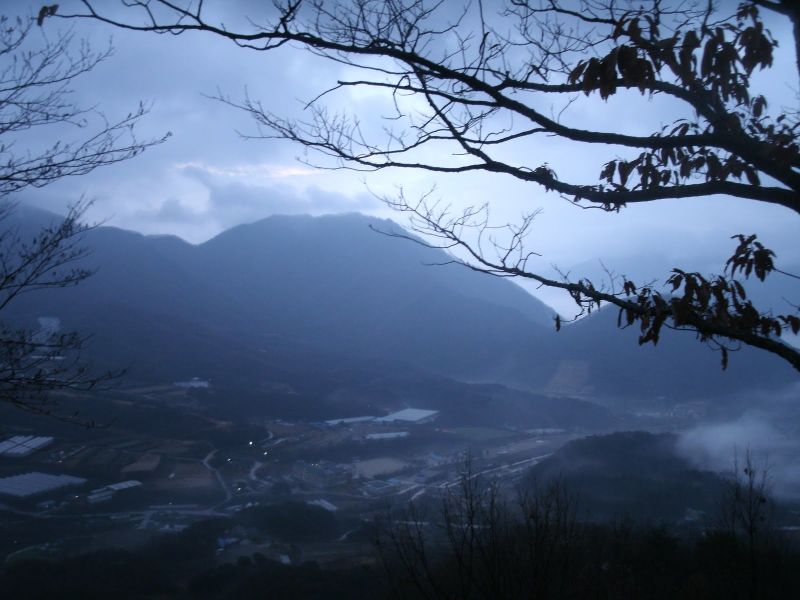
This picture was taken at sunrise from the top of Chang’an Mountain next to Sachangni. The catch is that, since Sachangni is west of the mountain, this is actually some other village that I’ve never visited.
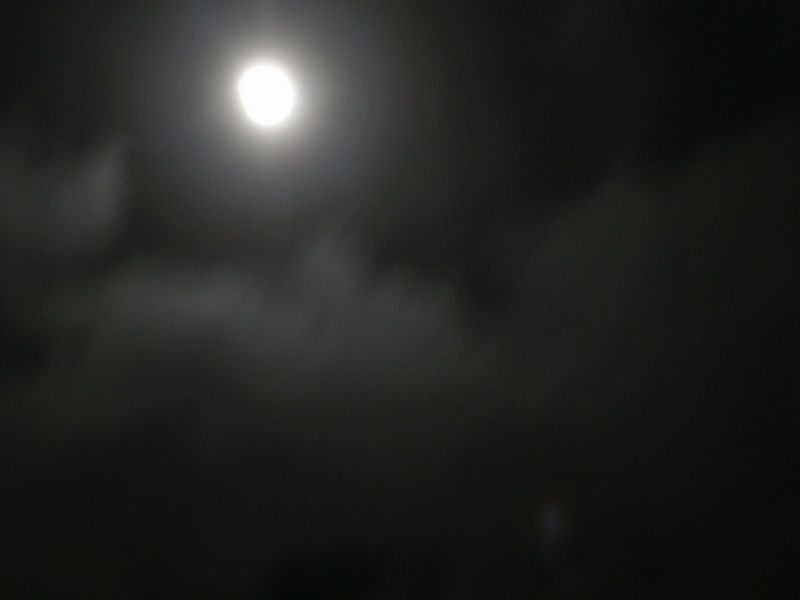
This is the least blurry picture I got of the moon during the eclipse. However, it had just barely started, so none of the moon is visibly shadowed. And then the failure of this picture made me give up. Instead I enjoyed it exclusively with my eyes. But I thought it desered commemorating here, even poorly.
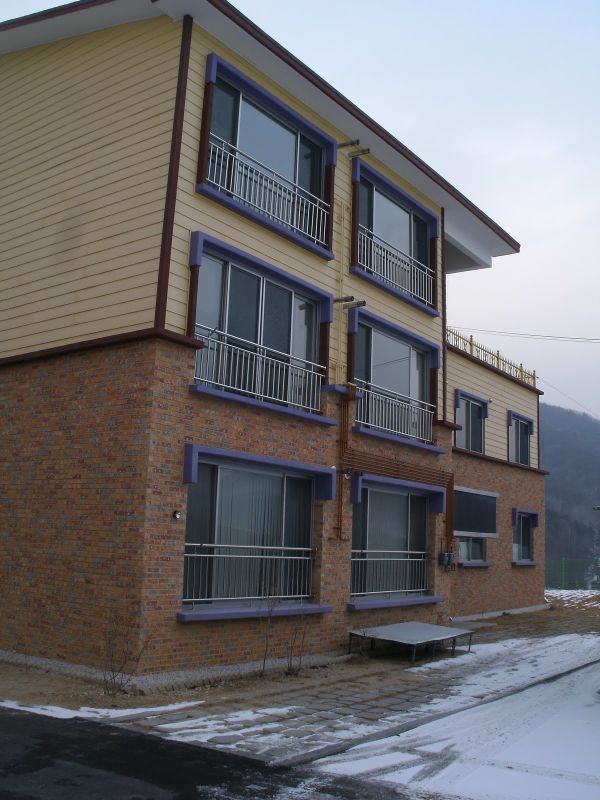
Here is where I live. This is the back of the house. My room is the one on the right side of the third floor in the foreground. I’m not really sure why I didn’t take a picture of the front of the building. Anyhow, this is one of the nicest places to live in town.
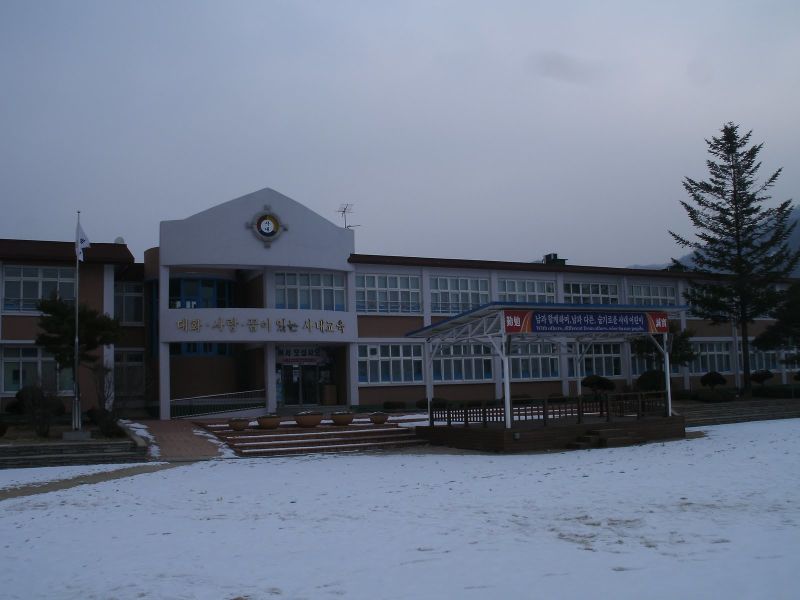
The school is directly next door. When I got here they were in the middle of remodeling it—putting in the nice steps out front and the big stage thing.
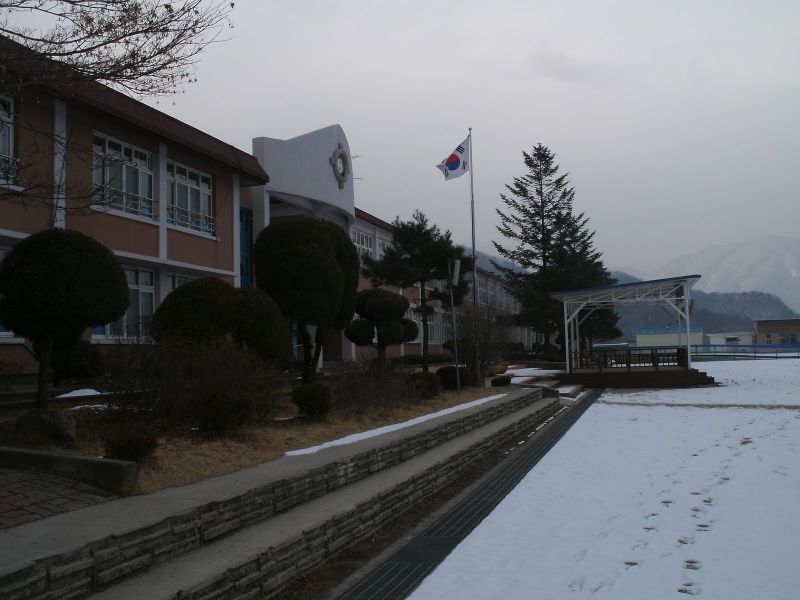
It’s laid out as a long corridor. Beyond the end of it in this picture is where my house is.
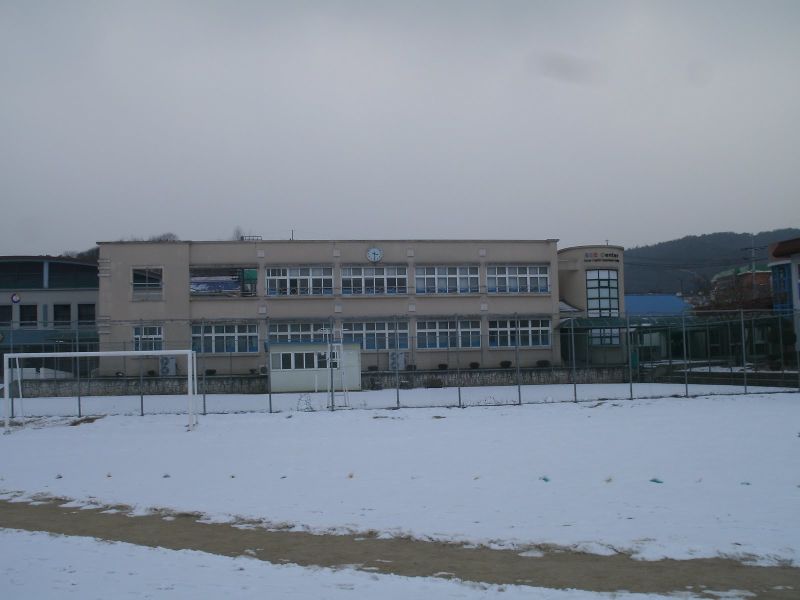
Looking the other way down the corridor, there’s another building not quite connected to the main building, so you have to walk outside to get from one to the other. This building is where the Sanae English Experience Center is located.
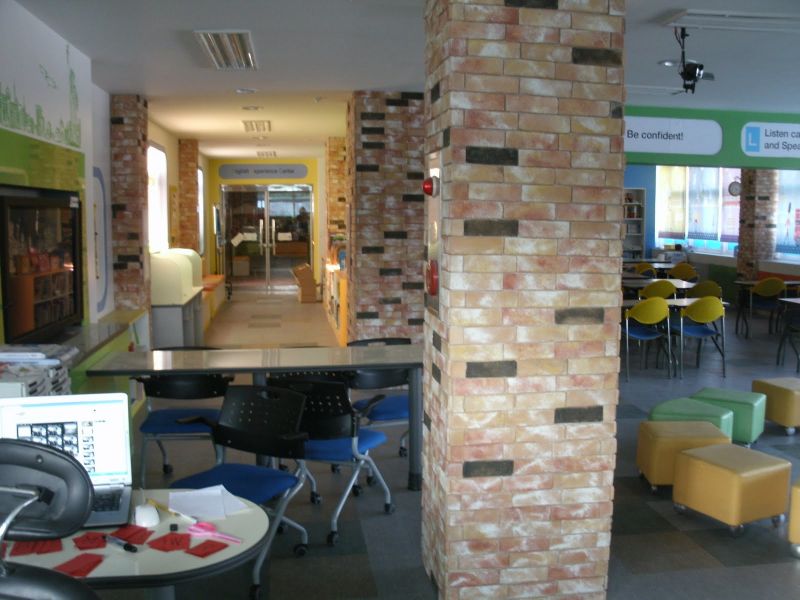
And here we are in the SEEC, which is never referred to by that name. (It’s the English room.) The computer on the left is where I spend hours each day.
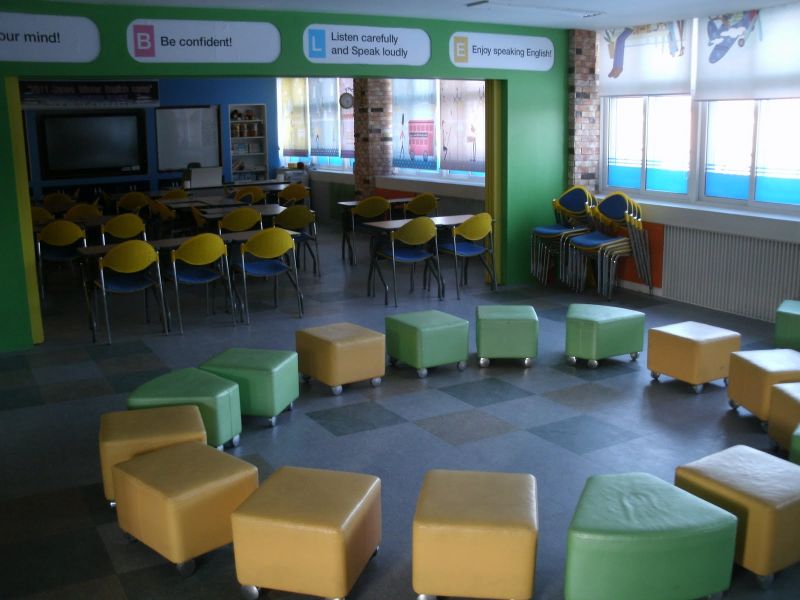
This is the back part of the room. It’s only occasionally used. During English camp, I was urged to make activities that take place in this part of the room because they make great photographs to show during the slideshow at the closing ceremony.
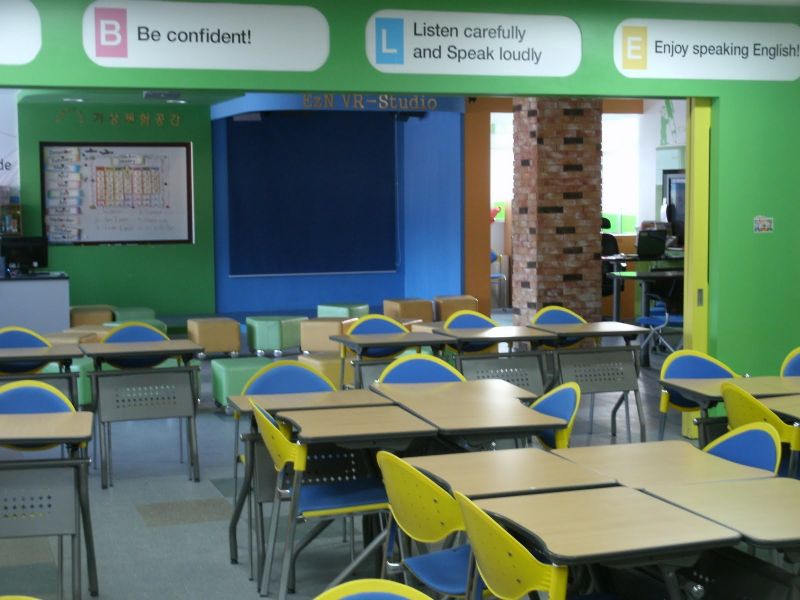
Here is a view in the other direction. There’s a fancy recording studio set up on the back wall. I’ve never seen it used, not once. Although there’s a camera hanging from the ceiling that’s been continuously on since I got here. I’ve tried to figure out how to turn it off twice now, and each time it gave me an electric shock. Amanda and I discussed whether this means that it’s actually spy equipment.
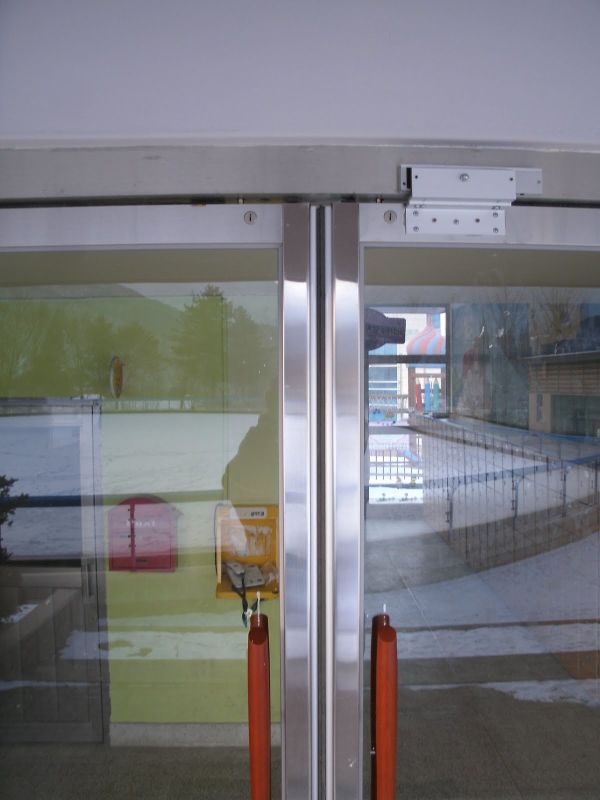
This door is perhaps slightly more weatherproof than the rest of the doors into the school. That half-inch gap above the doors lets wind in freely.
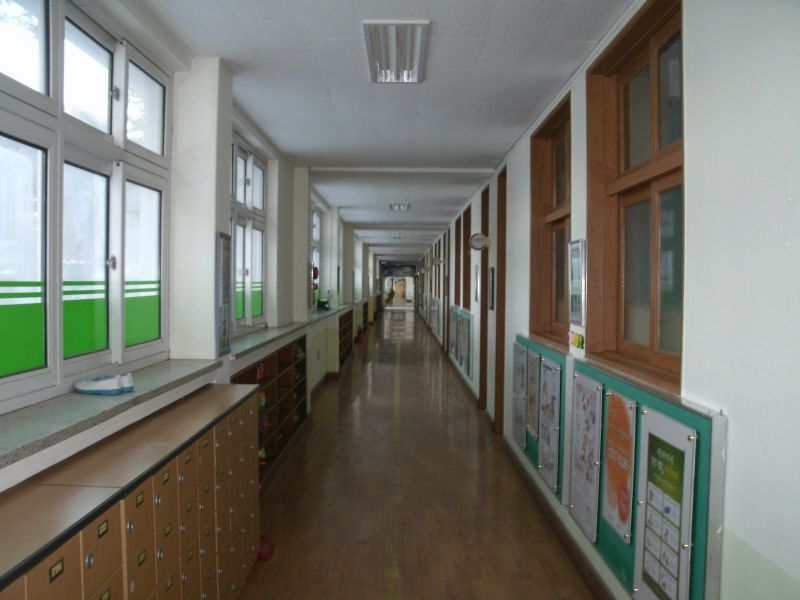
Here’s the main hallway of the school. Classrooms on the right wall, windows on the left, just like a loggia. The windows are single-pane. It seems that hallways are thought of as extensions of the outdoors, except with no precipitation. The thing is, the doors into the classrooms aren’t insulated. They’re made of plastic with a wood veneer. I really don’t understand the logic that led to these architectural principles.
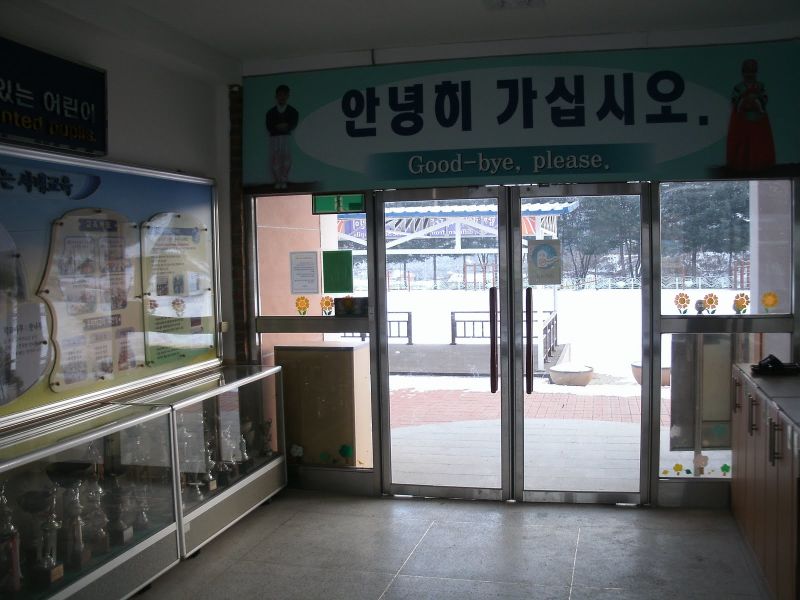
The front entrance. Good-bye, please.
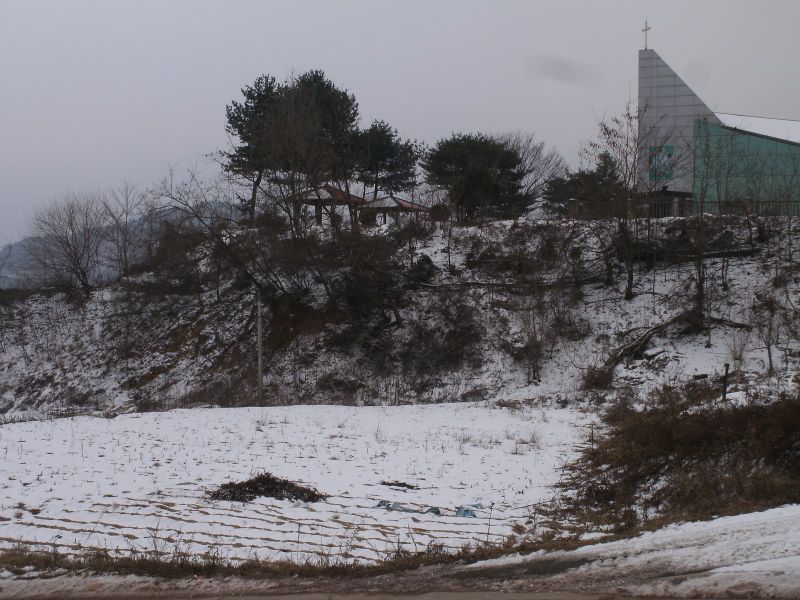
This is the area right next to the school. In America it would be a lawn, but here it’s put to practical use; I think during the growing season they had cabbage here.
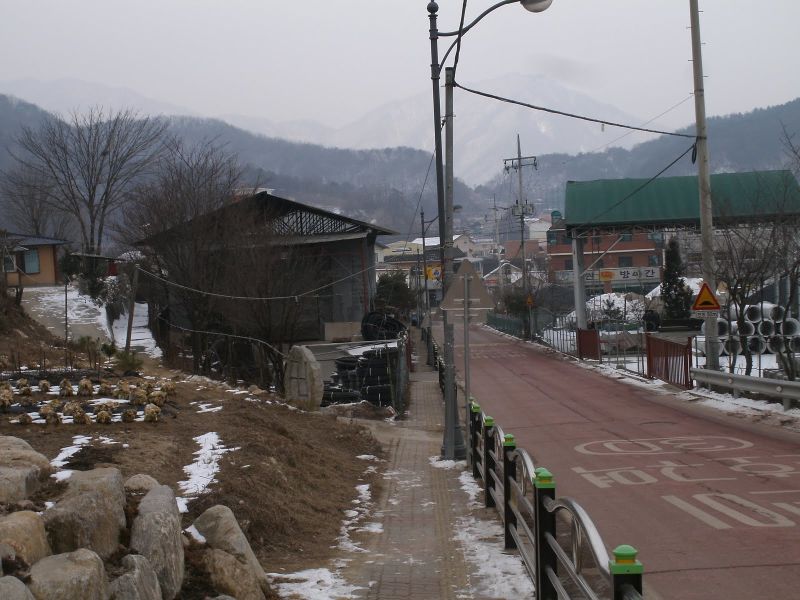
The school is high on a hill, so here’s the road down to the rest of the town. Coming off the left is a little road to a Buddhist temple, marked by a swastika.
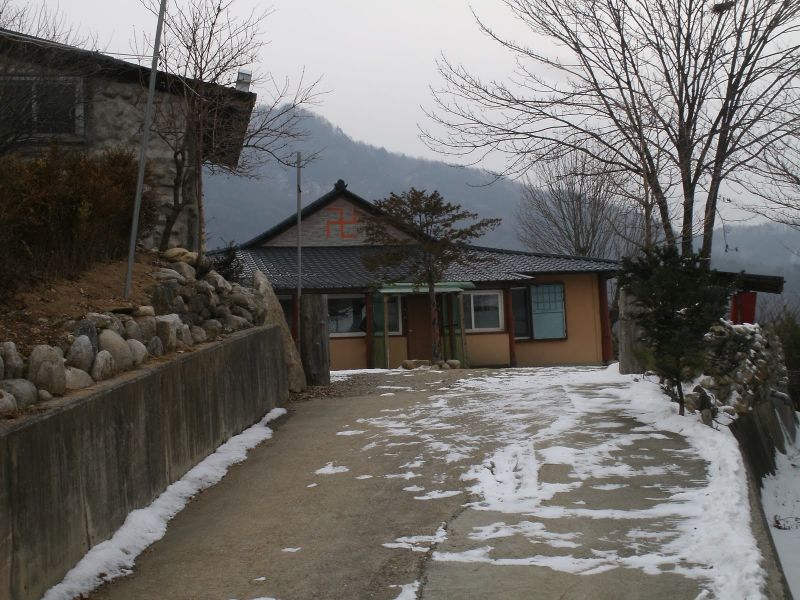
This is the temple at the end of that path. It’s just down the hill from my house. But it’s not the main temple in town; I guess it’s just an auxiliary, or maybe it’s for civilian Buddhists while the nicer temple is for soldiers only. At any rate, we’ll get to the other one soon enough.
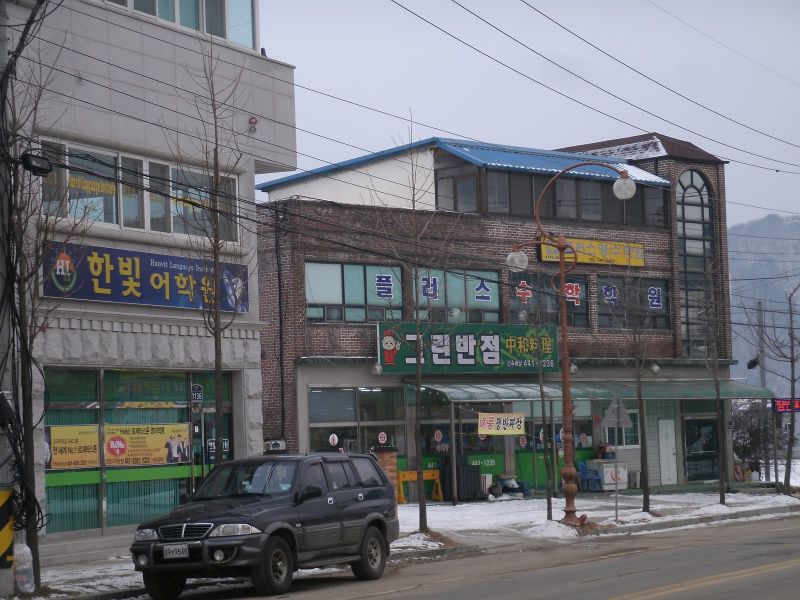
The upstairs of these buildings are occupied by hagwons, a thriving industry in Korea. They’re places where children can go after school to study more. They’re not such a big thing with elementary school students, but I still have quite a few kids who mention that they go to hagwons. They’re mainly popular with high-schoolers, who must take an exam at the end of high school that will determine the course of their entire life. The government recently passed a law that all hagwons must close by 10:00 pm. Before that, students would study there until perhaps 1:00. Now they study at home until 1:00.
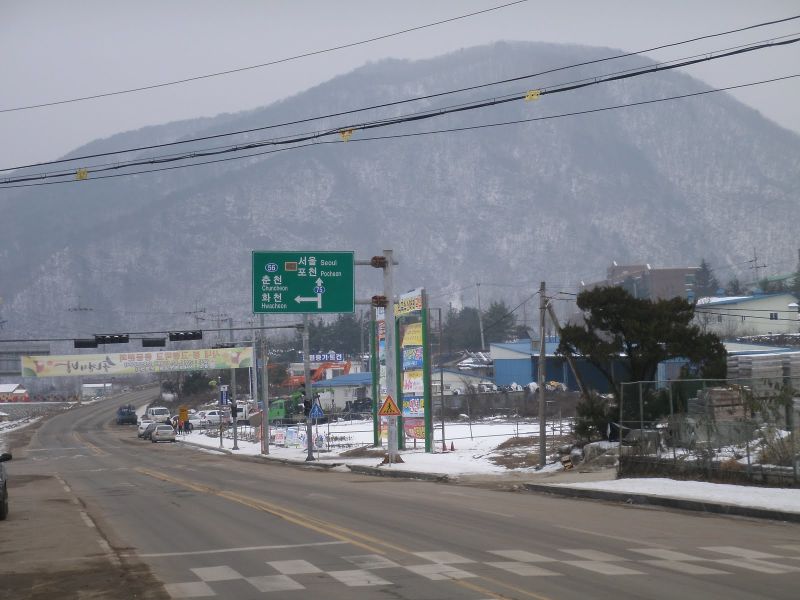
Beyond the hagwons, the town peters out and the road goes off to the mountains and to Seoul.
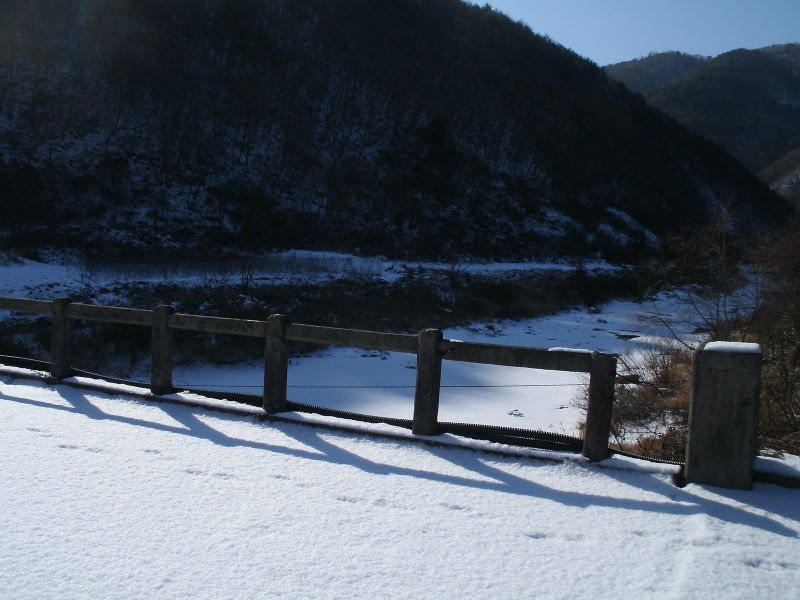
A little outside town is an old bridge that Sean found while wandering one day. It looks pretty dilapidated
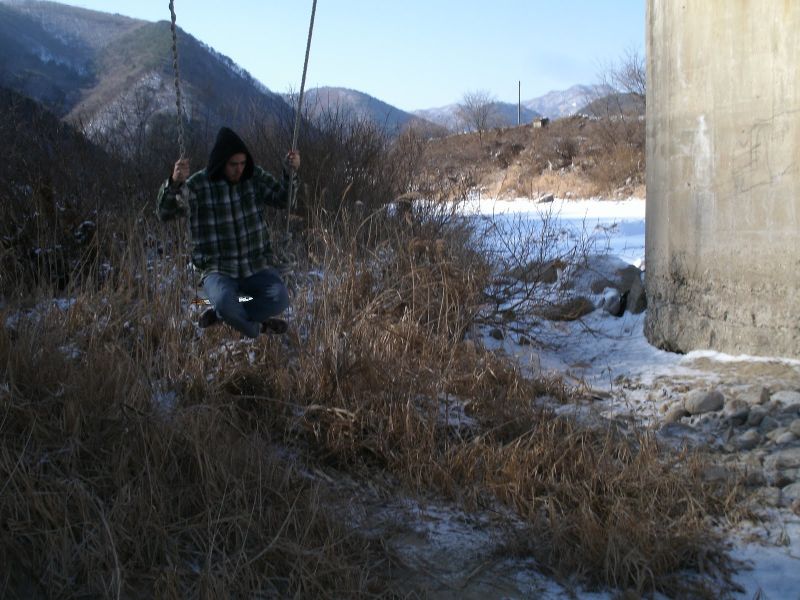
But a swing is slung underneath it: wonderful. Unfortunately, it’s so close to the ground that you can’t pump your legs with full energy, so you can’t get up very high at all. Maybe that can be fixed.
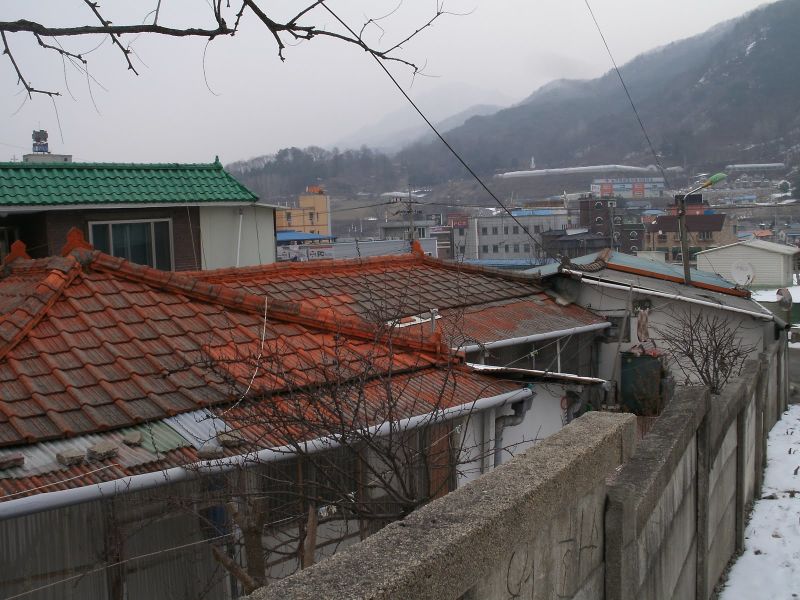
Coming down the hill from the school in the other direction, this is the road that I normally walk when I’m getting into town. People live in this house; it’s about typical for town.
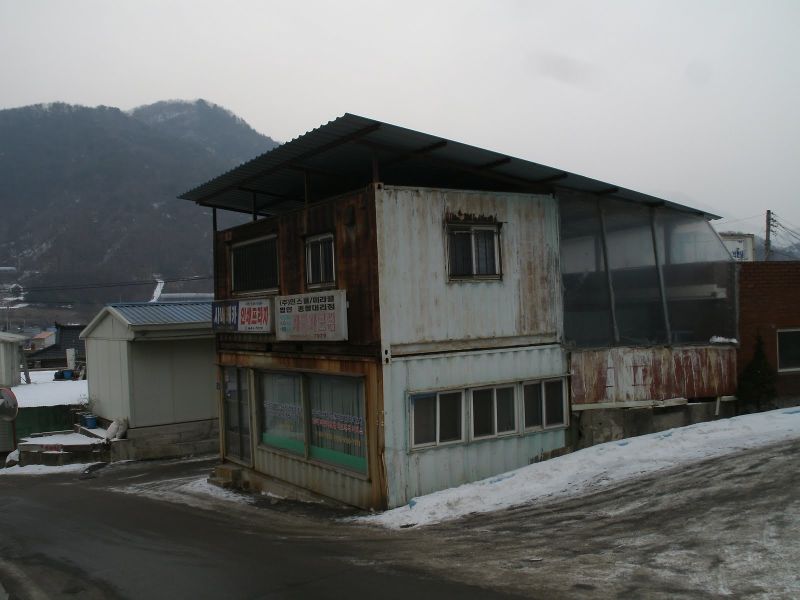
This building has a sign that says 인쇄프라자 (Inswae Peuraja, Print Plaza). I’m not sure if it’s even used, but clearly at one point it was. I had a dream once that soldiers were housed there and I slept in it with them. It was rickety on the inside too in my dream.
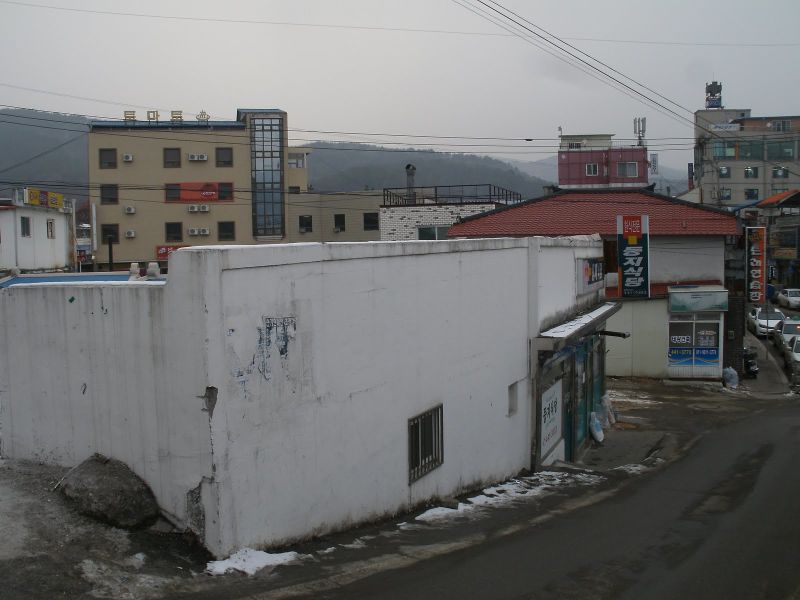
This is the Dungji Restaurant. They make a mean soft tofu stew.
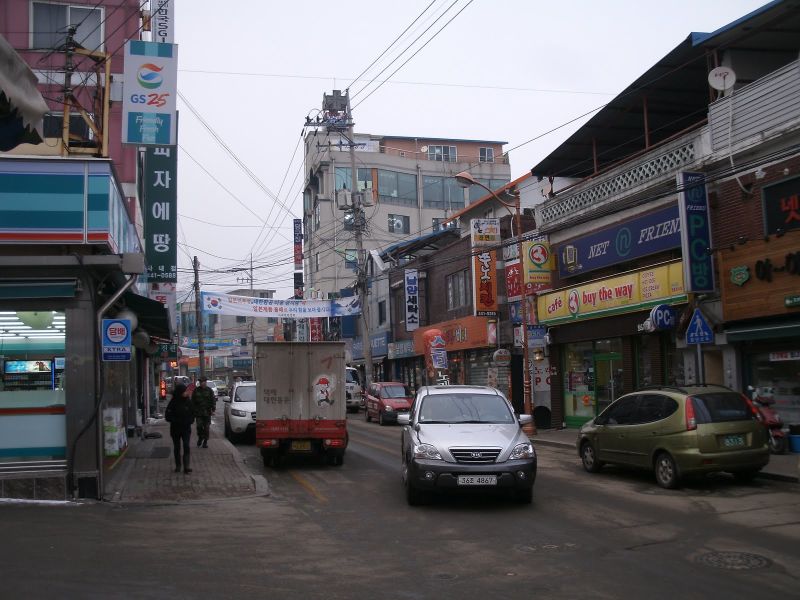
The main street in town. Buy the Way and GS25 are everpresent Korean convenience stores. Also present but not quite as prevalent are 7-Elevens. This area is mostly restaurants and convenience stores, which are useful for the soldiers who come into town.
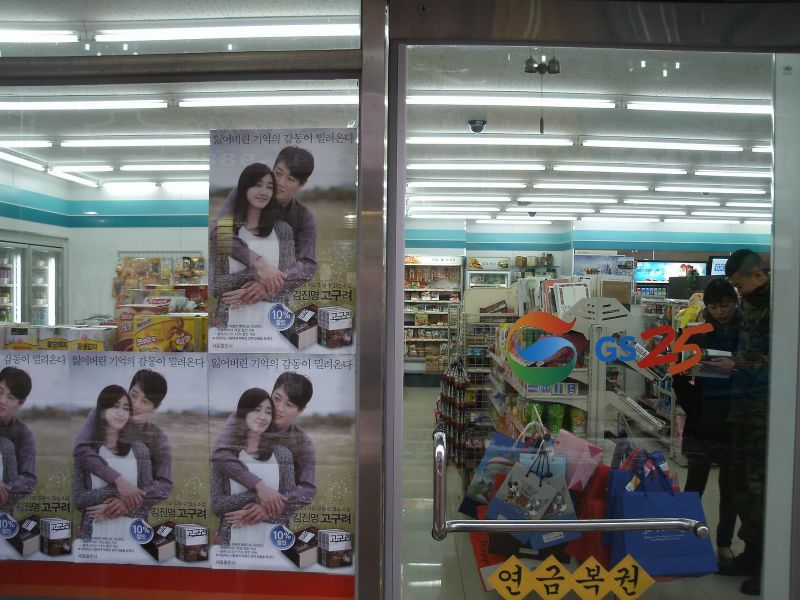
Here’s a look inside GS25. Of all the pictures I’ve taken in Korea, this might come closest to summing the place up. We’ve got it all: pictures of beautiful people, alcohol (in the fridge on the left wall), packaged goods, the military, cute romance, bad weatherproofing. (However, missing are: mountains, Buddhism, traditional food, and tradition itself.)
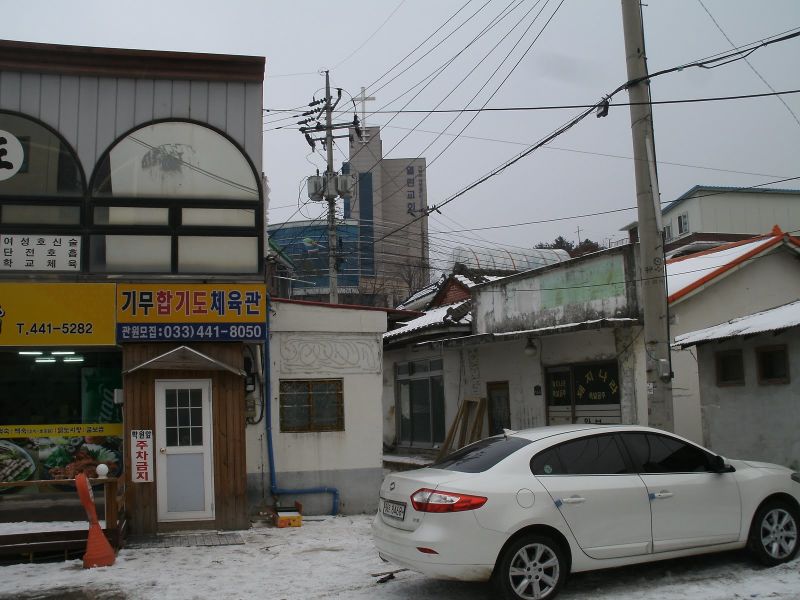
Off the main street is the hapkido dojang where I learn. The white door belongs to it. Next door we have 돼지나라 (Dwaeji Nara)—”Pigland”. I do not know what kind of business it is. I hope I am right that they sell pork. In the background you can see the church that’s next door to my house; it’s built with lots of glass, in the style used when ostentation is considered important to a building’s design.
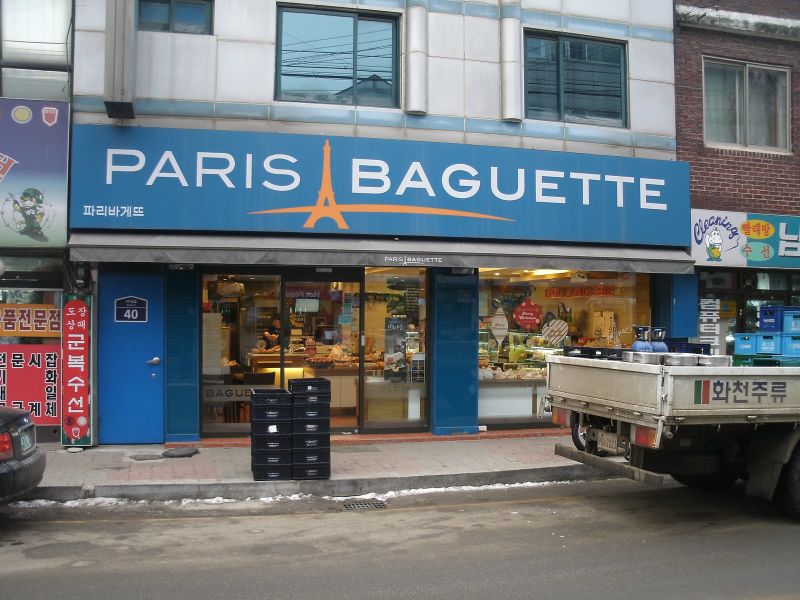
It would be hard to find yourself in any kind of populated place in this country and be more than a short walk away from a Paris Baguette. Almost everything they sell is delicious, and some things (like pizza toast and hot dog pastries) can almost serve as a lunch in a pinch.</p>
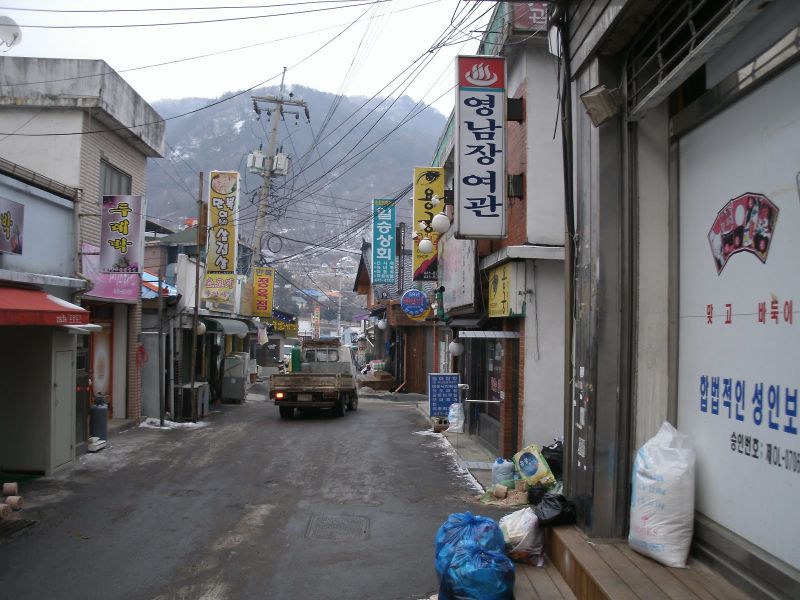
This is the street where the market is held on calendar days ending in 5 and 0. I’ll make a point of coming back on such a day to get pictures of the market while it’s happening.
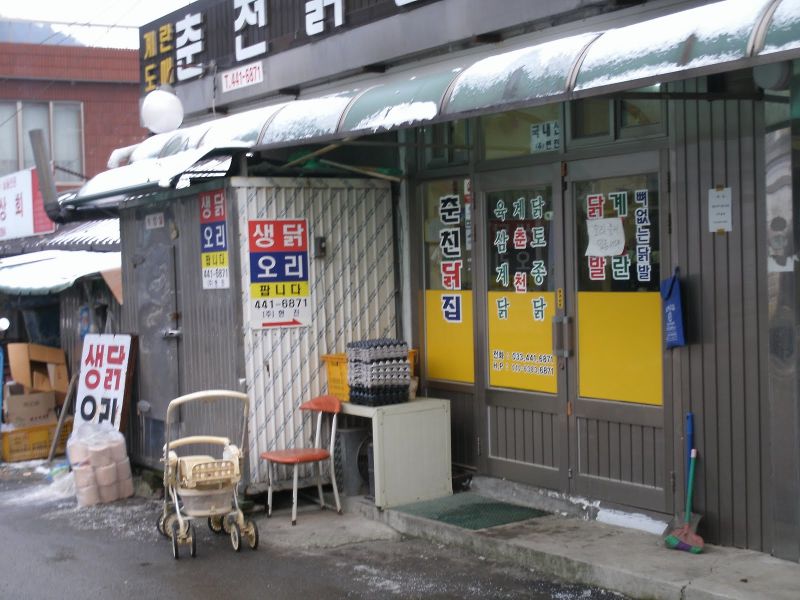
This place sells me fresh whole chickens (생닭—saengdak). They also sell ducks (오리—ori), which I may have to try sometime.
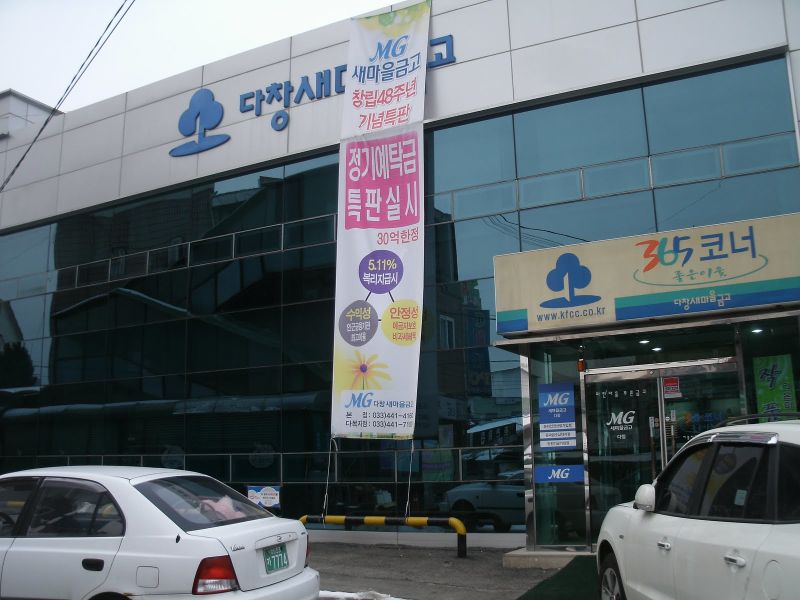
Here’s a bank, another example (like the church from earlier) of the lots-of-glass style of apparently impressive architecture.
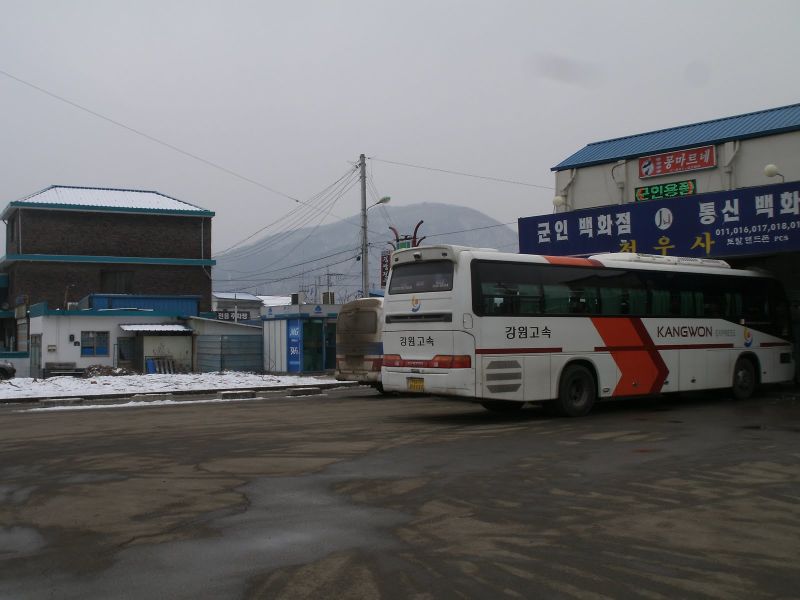
The bus station. This and Ben’s car are the only ways I’ve ever left Sachangni.
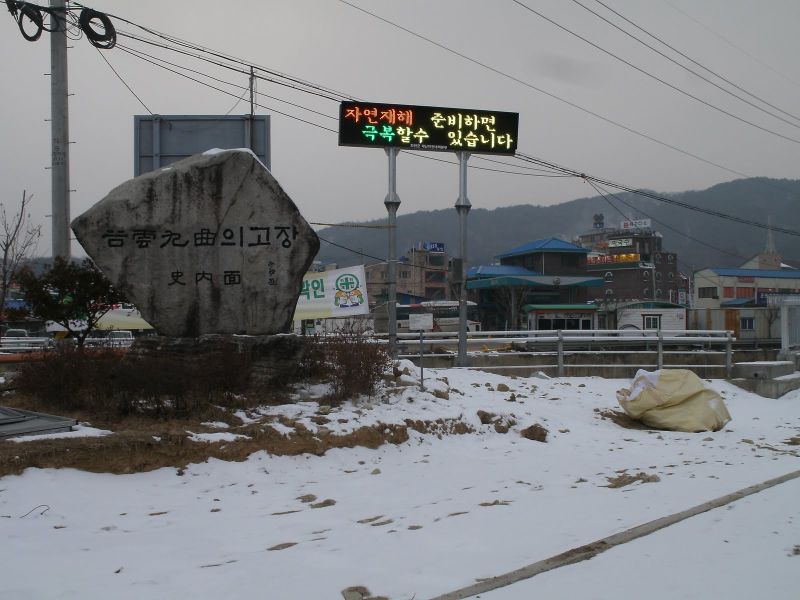
Nearby, at the bottom of the town, is the entrance from the highway. I don’t know what the rock says (because it uses old-fashioned Chinese characters and is thus very hard to translate). But the light-up marquee says, “If we are prepared for natural disasters, we can overcome them.” I don’t know why it says that.
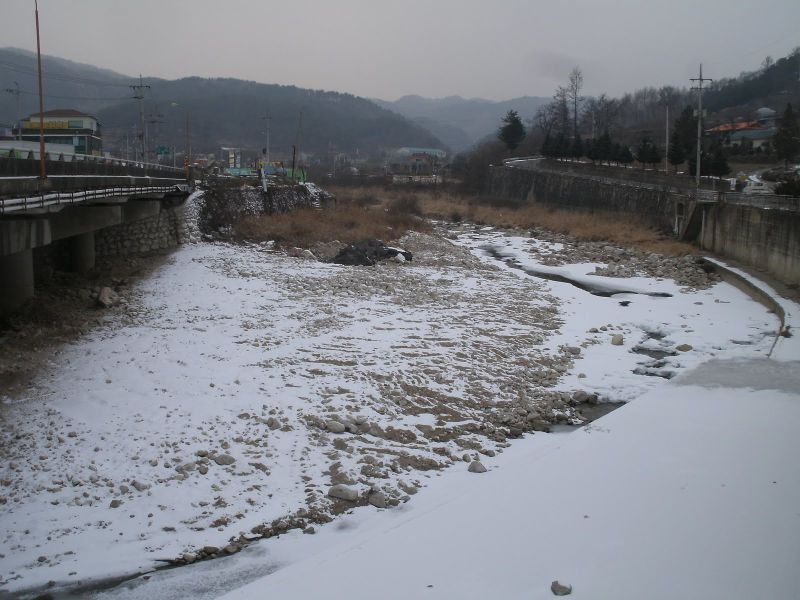
This is the Sachangcheon; cheon is a suffix that means “stream”.
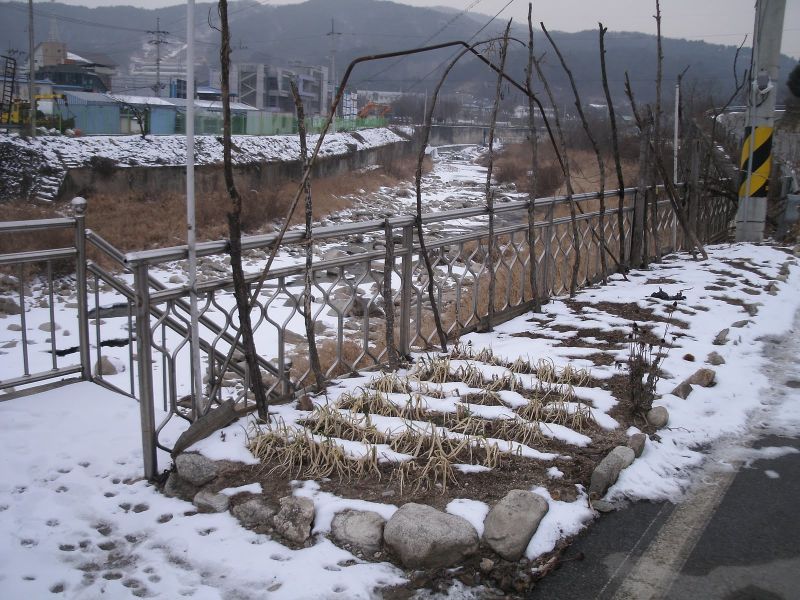
Another example of the endearing Korean practice of growing food in every place where it can be grown.
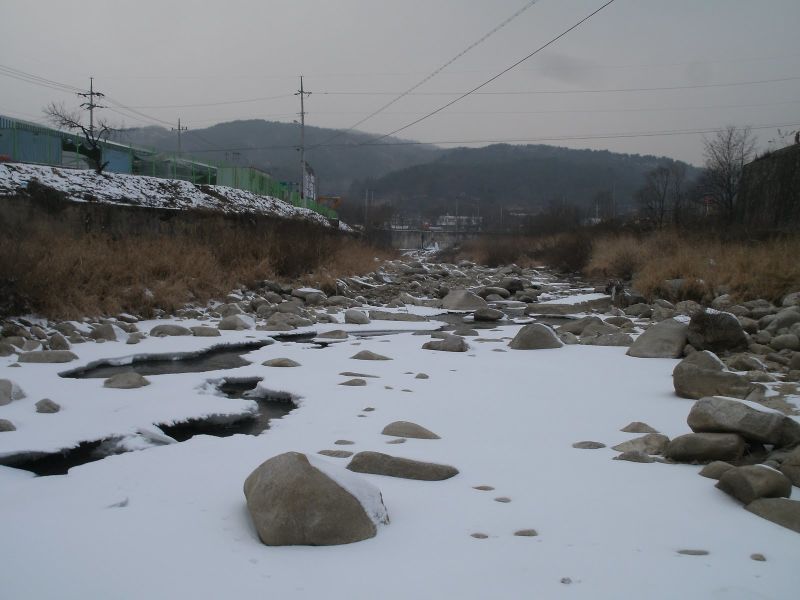
Sachangcheon from its level.
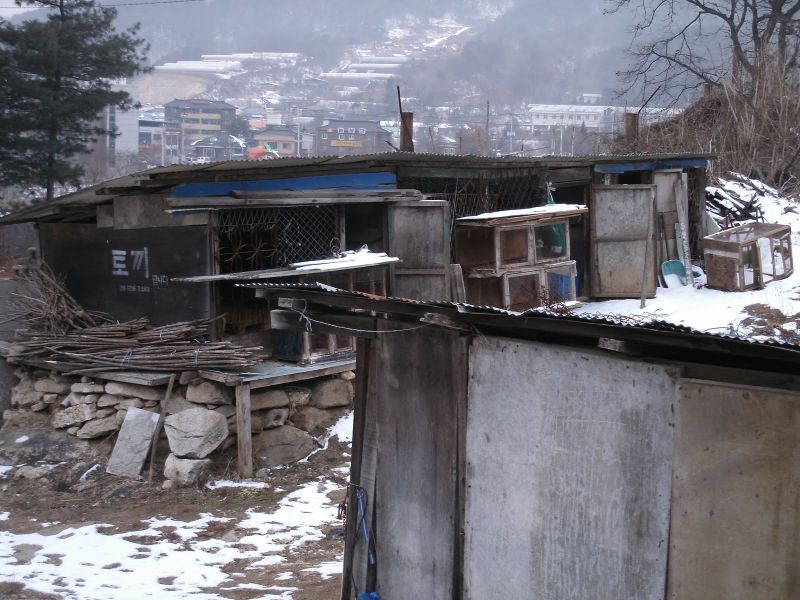
Across the river is the road up to Chang’an Temple; the trailhead up Chang’an Mountain is at the temple. On the road we have this place. Here, I believe, when it’s warmer rabbits are raised for consumption.
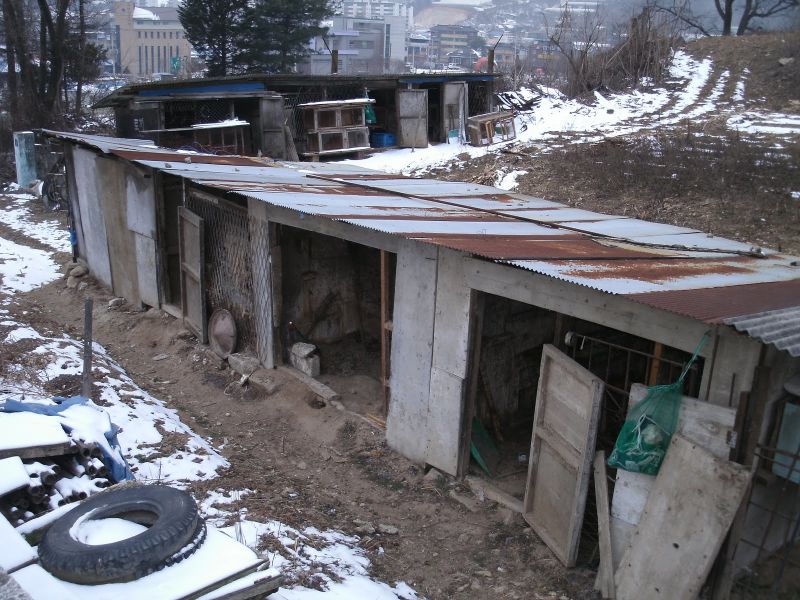
And here I believe is the same sort of facility but for dogs. Though I’m not sure.
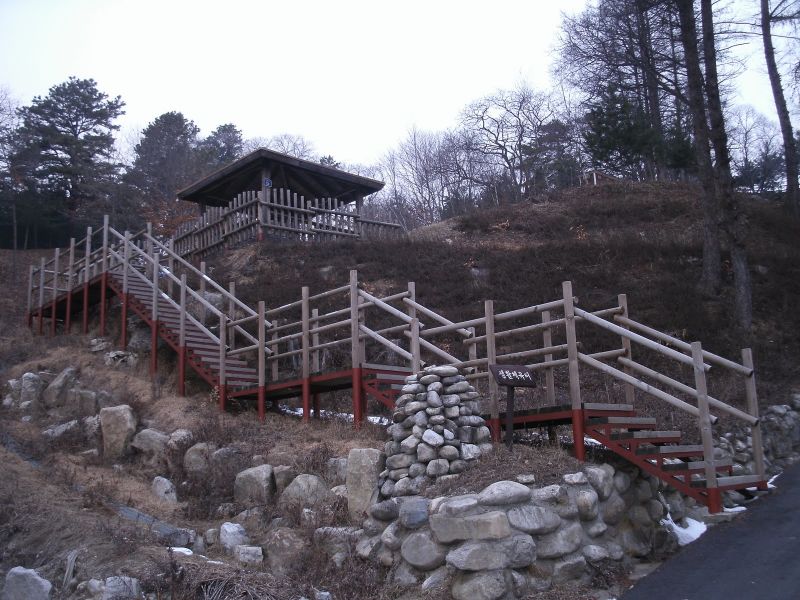
The beginning of the trail up the mountain. I didn’t climb it during this walk.
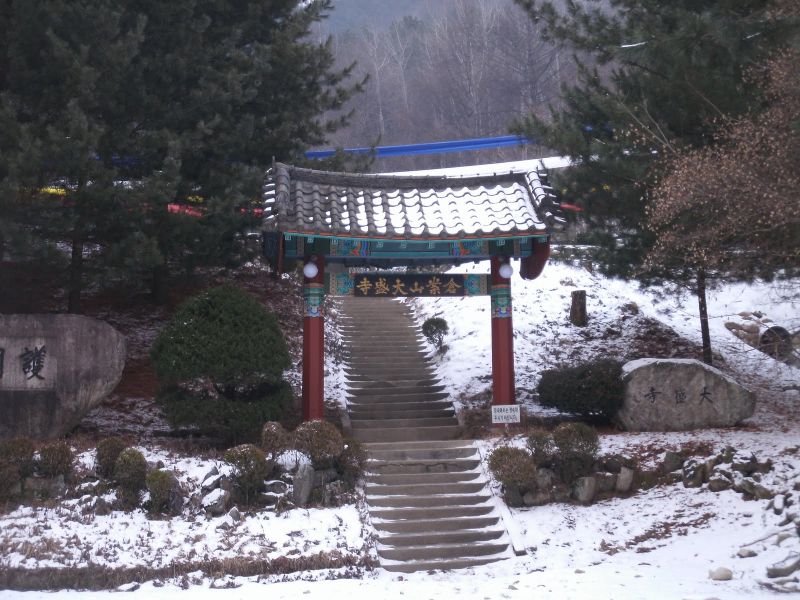
Instead I went to the temple. These are the steps up to its parking lot.
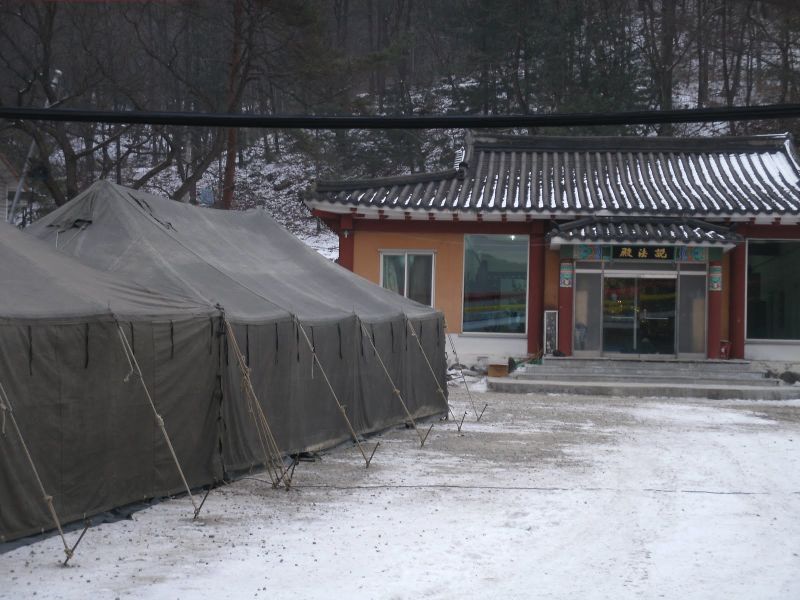
The facilities for the New Year’s Day festivities. The tents were open on the other side and had four-foot-tall heaters in them.
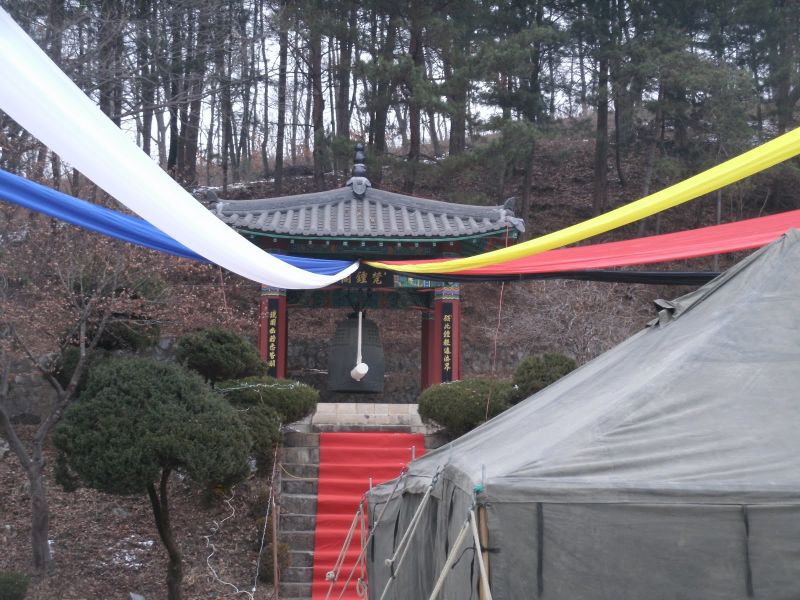
The osaekcheon (five-color banners).
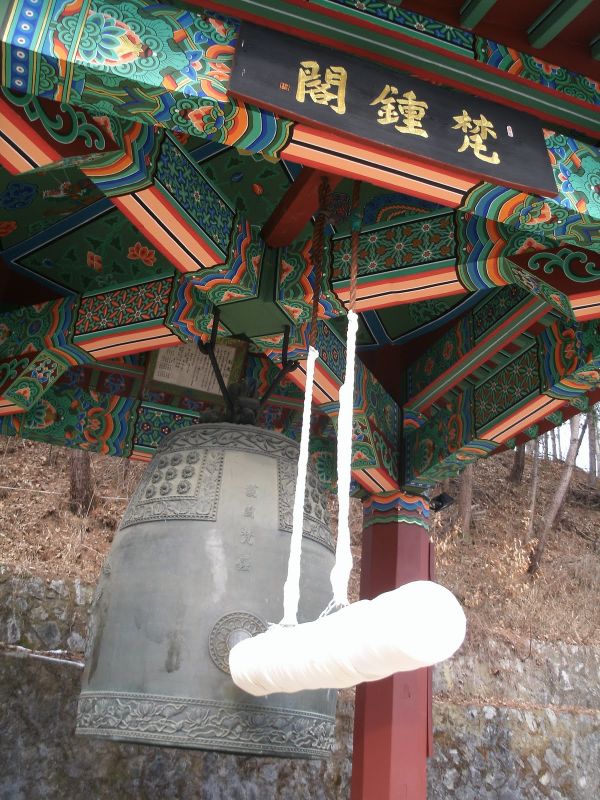
This bell isn’t rung just on special occasions. It’s also rung several times at 5:00 pm every day. I hear it as I walk back to the house from work. The log is special, though.
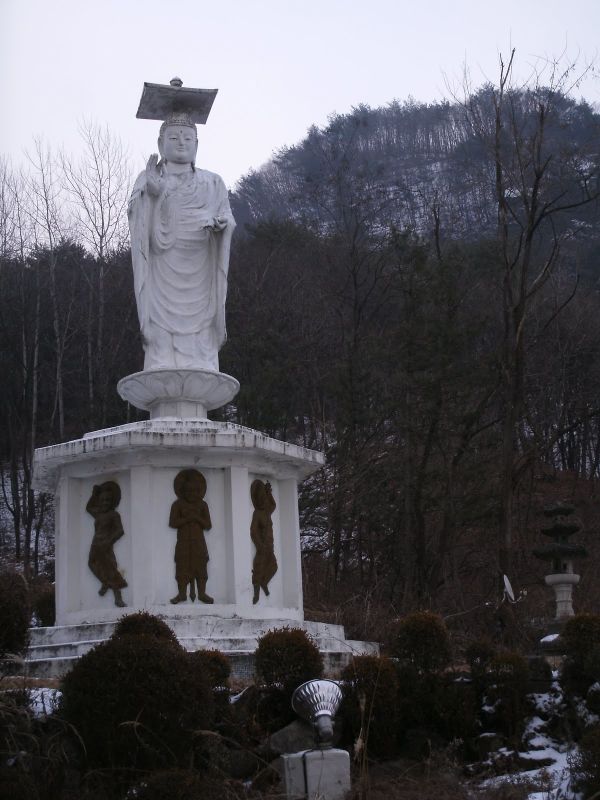
The Buddha watches over the town.
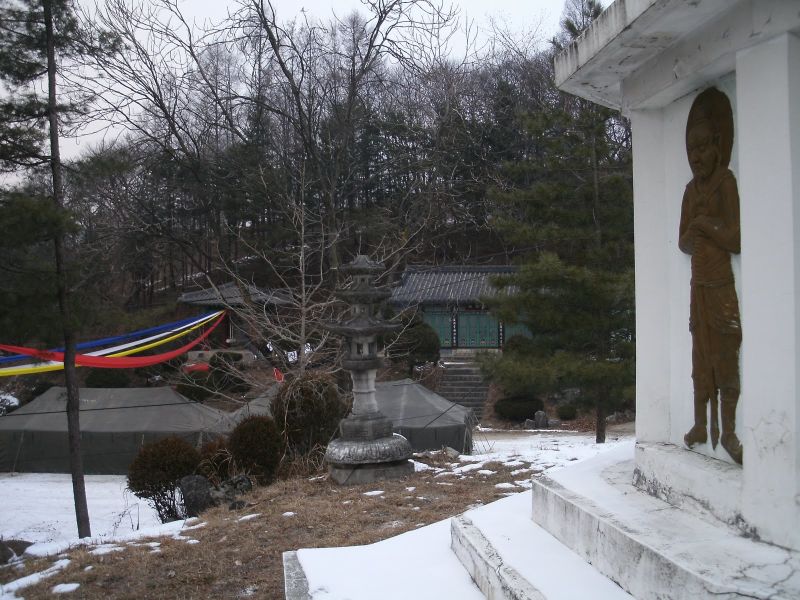
The Buddha stands on a prominence next to the temple. From it you can see the layout of the whole celebration a little better.
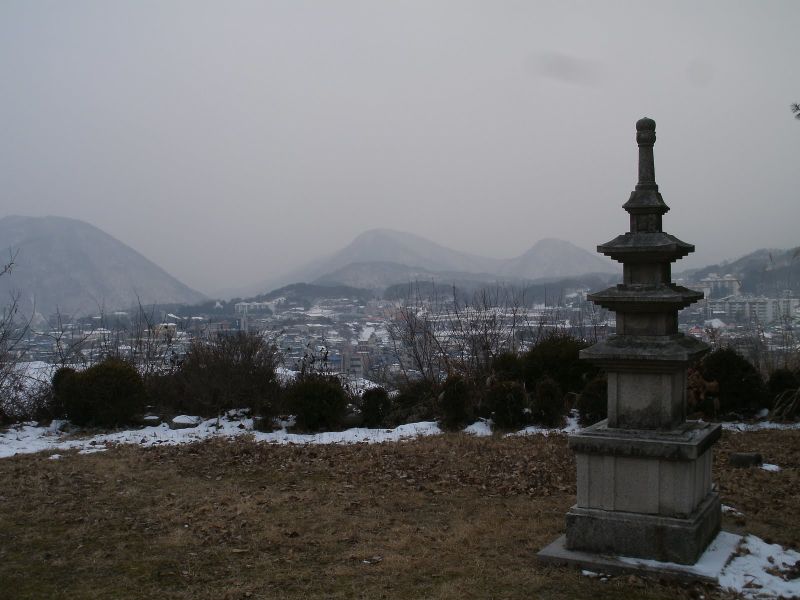
This is what the Buddha sees.
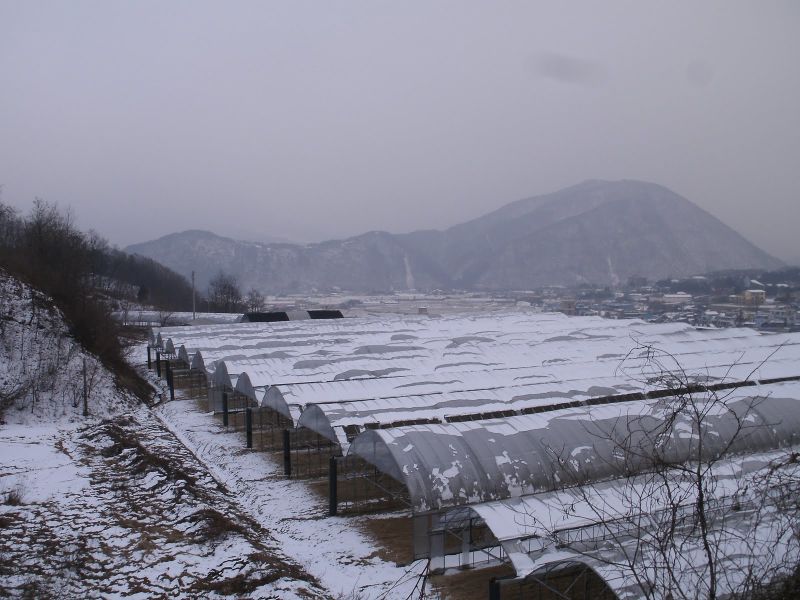
On the other side of the prominence is one of many series of tomato greenhouses where they grow the tomatoes that this tomato town is famous for tomato tomato. Which is a perfect segue to the tomato park. It is a place that I did not know existed until a few weeks ago. I can’t explain this fact well.
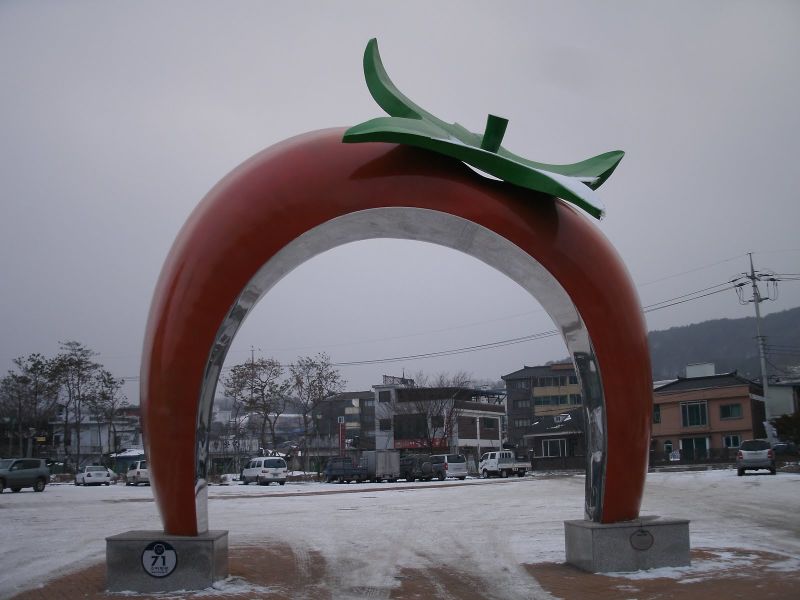
Come, walk with me as we journey through a land of wonder and tomatoes.
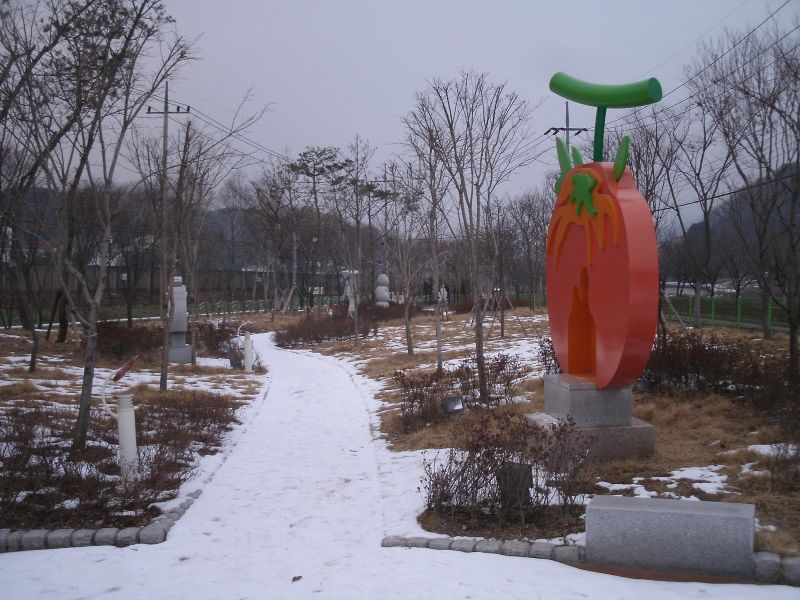
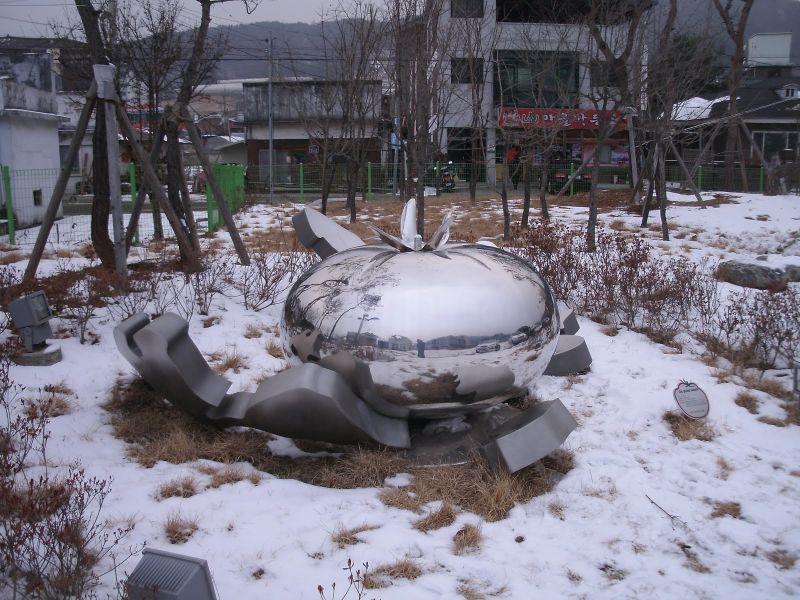
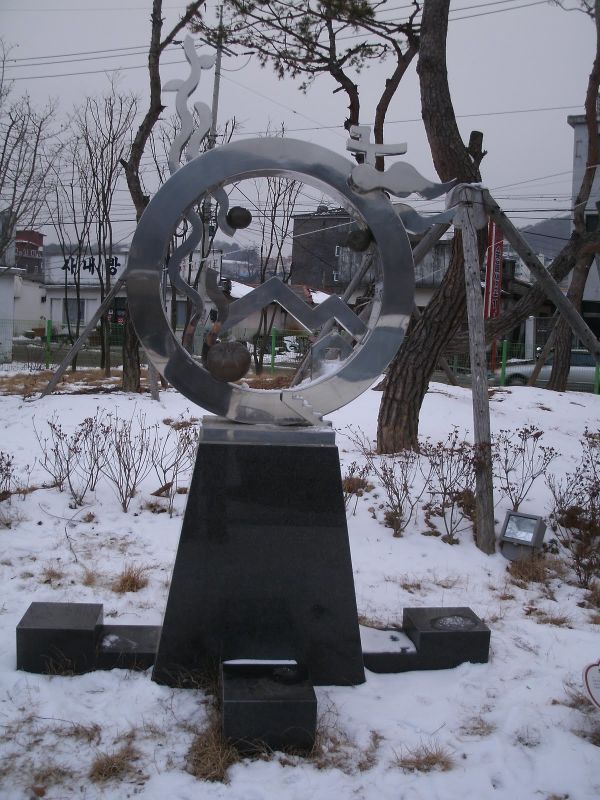
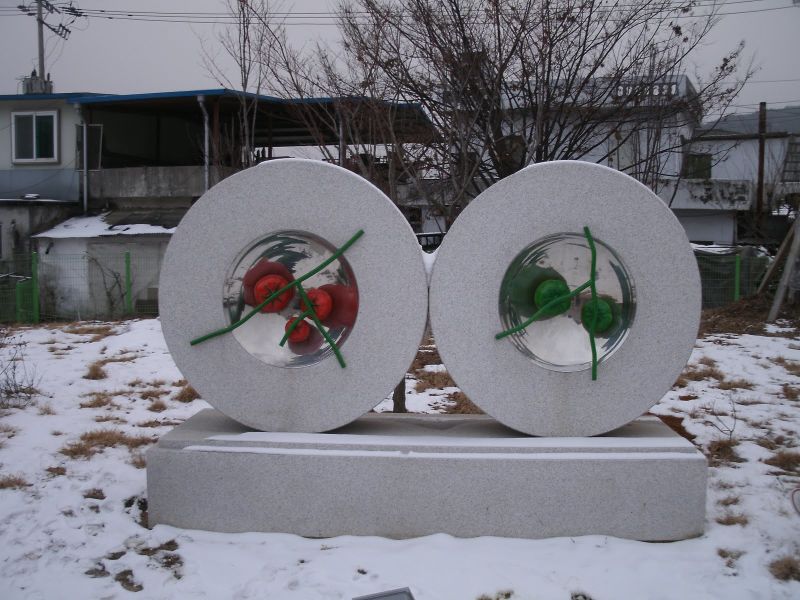
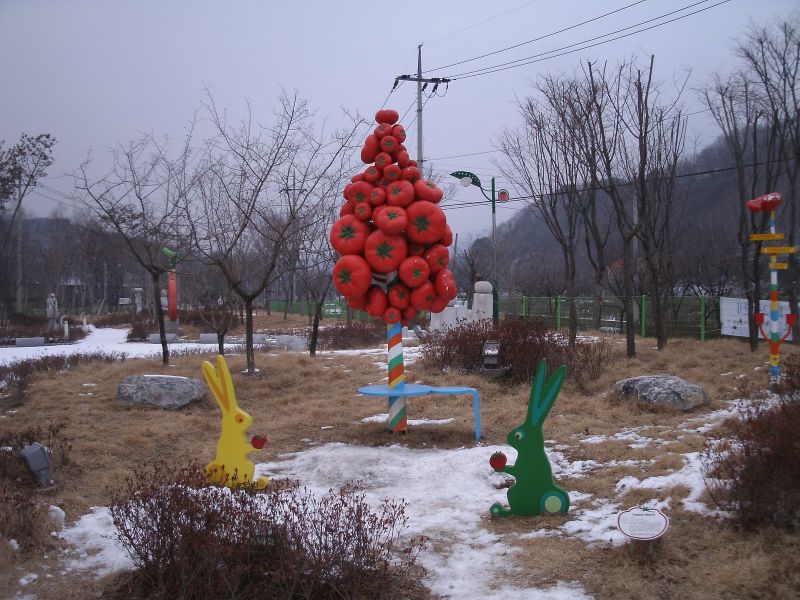
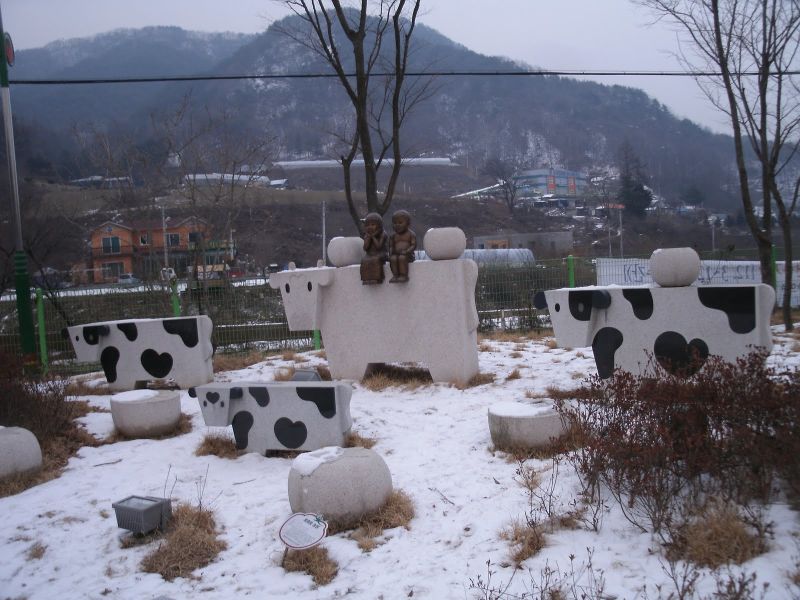
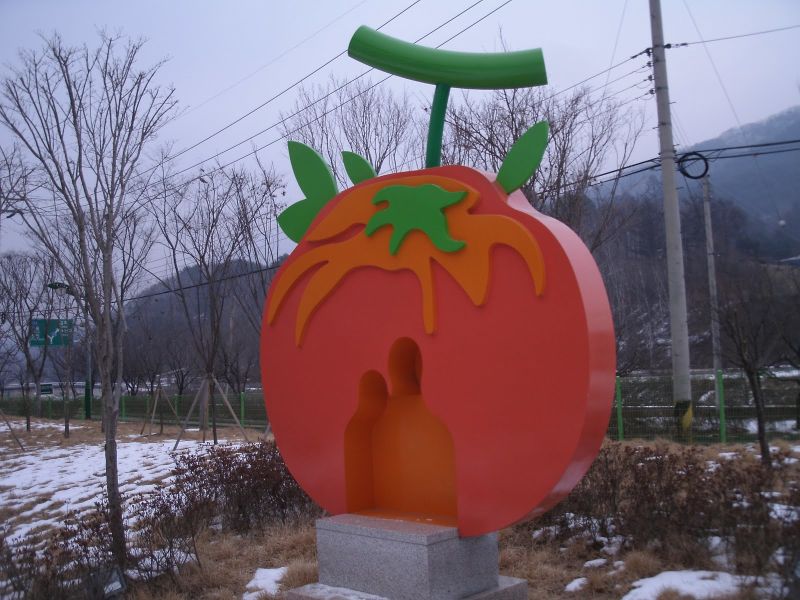
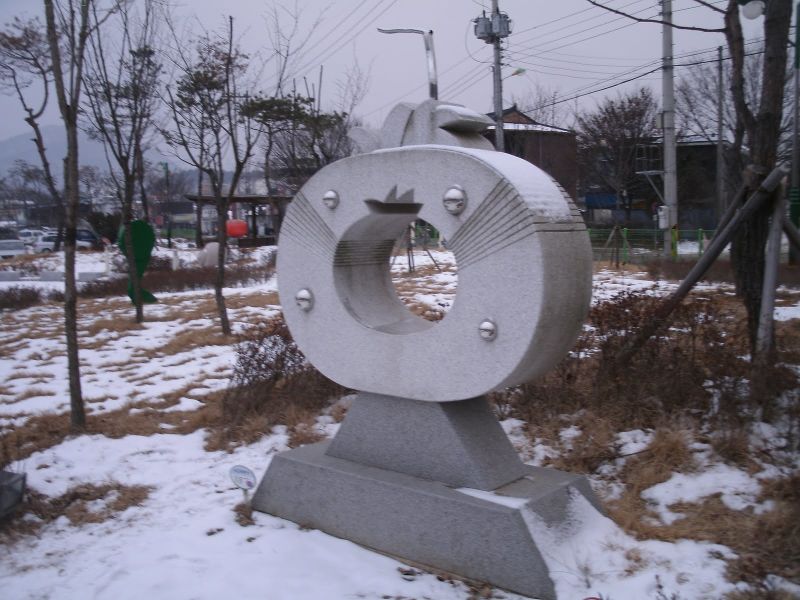
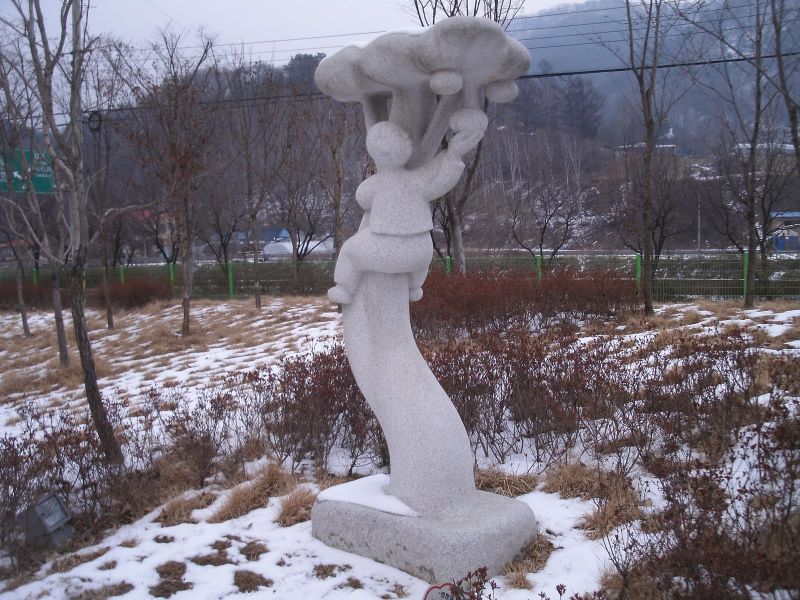
There’s nothing I liked better as a kid than climbing the tomato tree and plucking myself some nice, juicy, red tomatoes.
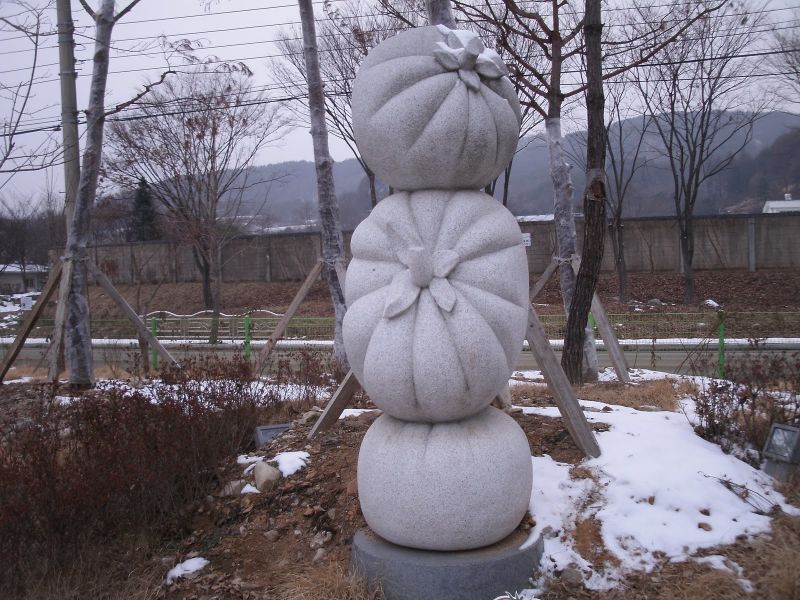
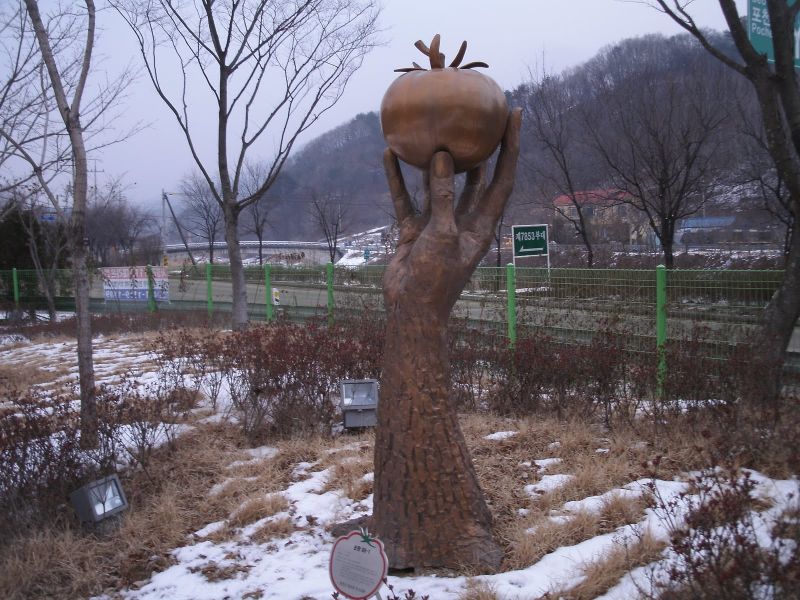
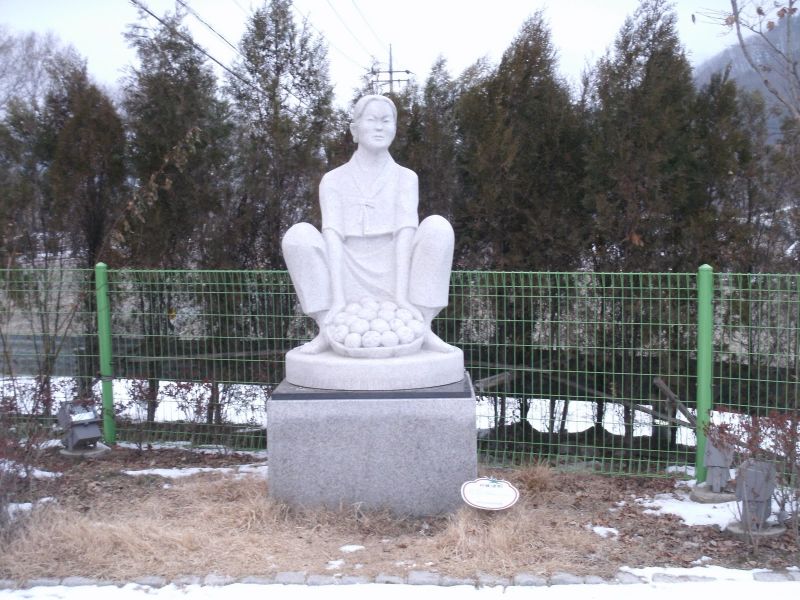
As I walked toward this statue, an old man was coming in the opposite direction. He pointed meaningfully to this statue and to my camera. After I took a picture, he seemed satisfied.
So that’s it for this. Tomorrow I leave for southeast Asia. Twenty-four hours from now, I’ll probably be sleeping in Incheon International Airport. Forty-eight hours from now, I hope I’ll have found a hostel on Khao San Road in Bangkok. I’ve been staring at computers for probably more than half my waking day every day for weeks now, so I’m planning to unplug completely during this trip. This may mean that you have no way of determining how I’m doing for about three weeks. That may seem extreme, but I’m going to be doing a lot of traveling in the future, and I think it may be something that you may have to get used to. I’ll be in Mongolia for three weeks come September, and there’s no chance that I’ll be able to log in to Facebook while I’m there, because I’ll be out on vast plains where the closest thing to an internet cafe will be the scattered yurts of nomads. Don’t panic. I’m a careful person and I plan on taking all reasonable measures to ensure that I’m not beaten, mugged, or otherwise thrown into an undesirable fate. All the countries I’m traveling in are considered pretty safe, and I’ll mostly be in wild old-fashioned cities where con artists and lowlifes aren’t drawn, because all the easy marks are to be found in Bangkok and Hanoi and such places. It may be possible for me to note quickly once a week that I’m fine, but if it doesn’t happen, just consider no news to be good news.
And incidentally, I am going to have so much fun. I’ll tell you all about it.
File under: photos · Places: Korea
Note: comments are temporarily disabled because Google’s spam-blocking software cannot withstand spammers’ resolve.
4 Comments
Anonymous
HistoryWell you did it again. You made me jealous as all heck. I have wanted to go to Mongolia for decades, especially the dinosaur digs in the Gobi. But first have a great time in Thailand etc. Nathanael and send us many pictures when you return. Grandpa
Anonymous
HistoryWonderful pictures. I will try not to worry about you over there, because it's what you need to do. Have an adventure. Live. Learn. Be completely alive. And I know you do that anyway. We will be thinking of you and hoping to hear from you occasionally if possible. Grandma
Anonymous
HistoryHave a blast. IF all we crave is safety and security we are dead inside.
Dave
Sean
HistoryI think we can definitely fix that swing ;)
Sean